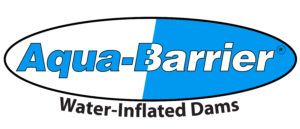If your property is in a flood plain, having adequate flood protection is essential. Of all of the options available to you, a flood protection barrier is a trusted choice across the United States. That being said, you may be questioning how the design actually protects against intruding water.
[bctt tweet=”Having a flood barrier is one thing, but do you actually know how they work? Learn from our top flood protection experts!” username=”HSIServicesInc”]
In the United States, there are a number of natural disasters that can cause flooding. From torrential downpours to tropical storms, a major storm can cause water levels to rise exponentially. Without the right kind of protection, the well-being of your property and its occupants could be at risk. One solution many business owners have found to protect against flooding is a barrier.
What is a Flood Protection Barrier?
A flood protection barrier is a specific type of floodgate that is designed to prevent water from entering a particular area. Also known as surge barriers or storm surge barriers, there are a number of different barrier materials used today. From glass to metal, flood barriers can be permanently installed along the edge of water banks to create a flood wall. For added protection, business owners can install temporary flood barriers to further protect a certain area.
Working Principle Behind Water Barriers
Water is a powerful force. One strong current can cause an area to erode and carry sediment miles away. For property owners, a few inches of water can cause thousands of dollars of property damage. In addition, contaminated water can cause a number of health problems including injuries and infectious diseases.
That being said, water barriers work to inhibit water flow by diverting it into another direction. Every flood defense system includes two important components: a barricade and a pump.
- Barricade – Depending on the size of the area and flood potential, a flood barrier acts as a barricade towards rising water. In that way, it works to keep water from flowing to the other side.
- Pump – Every flood barrier design varies, but to protect against flood damage, it’s important to control the flow of water. With a specially designed pump, water can be transferred to a nearby reservoir or drained in a less populated area.
Installing an Inflatable Flood Barrier
An invaluable resource for many property owners is an inflatable flood barrier. Unlike other temporary barriers on the market, an inflatable barrier offers flexibility with its vinyl coated polyester material. The Aqua-Barrier, in particular, is designed to be repaired and reused over and over again.
To install an inflatable barrier in anticipation of flooding, barriers are simply unrolled and inflated in a particular area. Once water levels start to rise, a minimum of 25% of the freeboard is required for stabilization. The patented internal baffle system locks into place when the barrier is exposed to a certain level of hydrostatic pressure. Essentially, the barrier will create a water gate between the barrier and incoming flood water.
Pro Tip: Before installation, survey your water barrier for water pressure leak or malfunctioning issues.
Are You Ready for a Flood Event?
Flooding can happen quickly and without warning. With a strong hurricane season predicted ahead, it’s important for you to have the tools you need to get ready. By creating a dam between storm surges or water drainage, flood protection barriers can help you ward off water currents.
Connect with our sales team for more flood control solutions to keep your property dry in the coming months.


